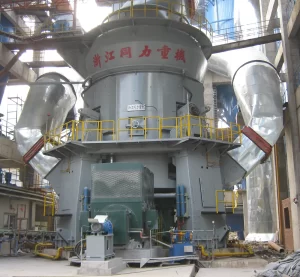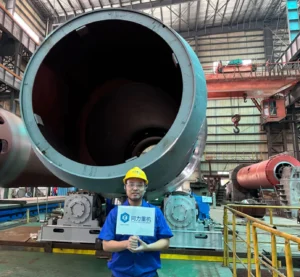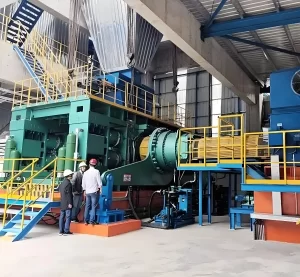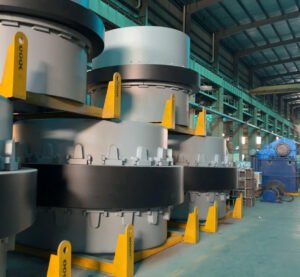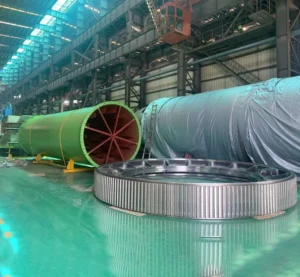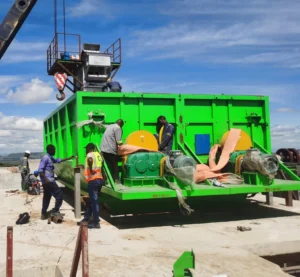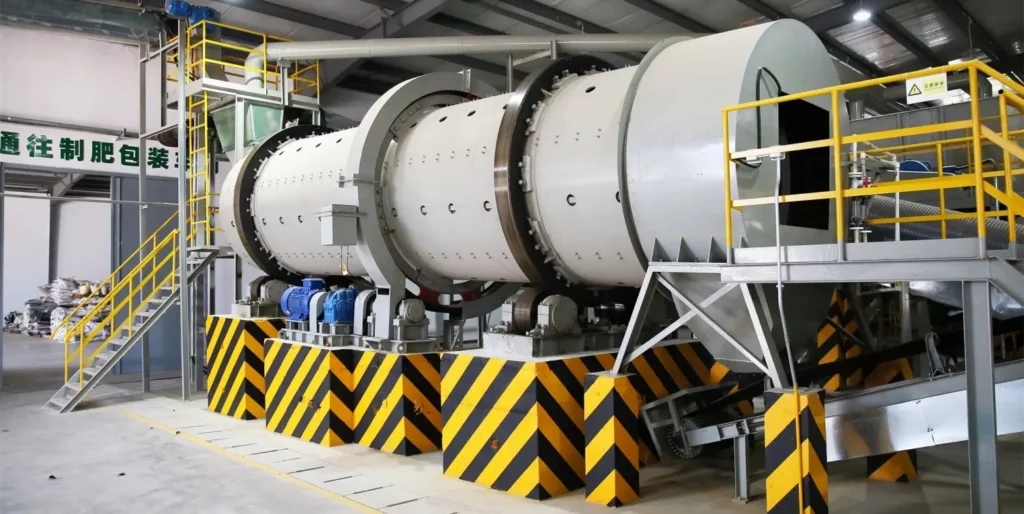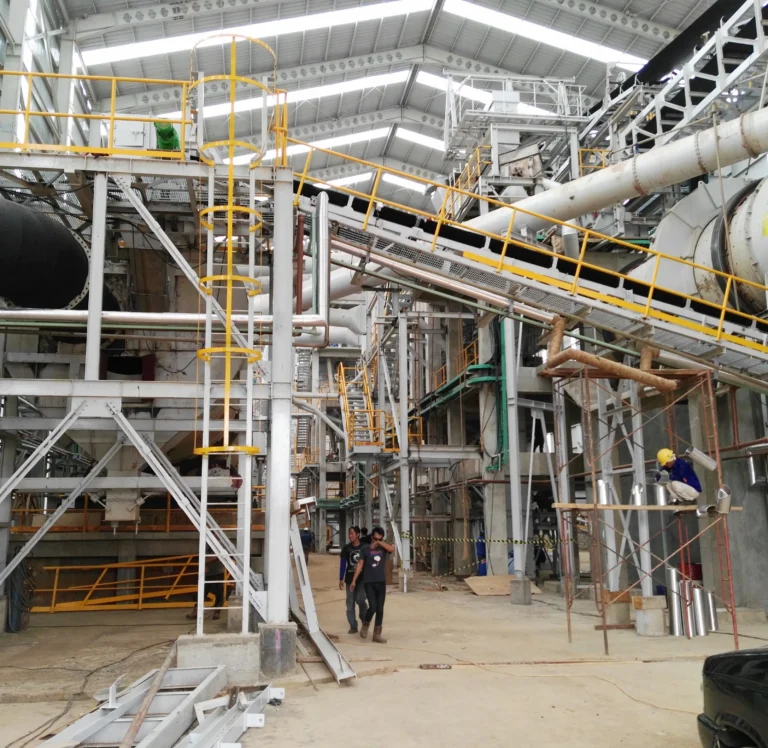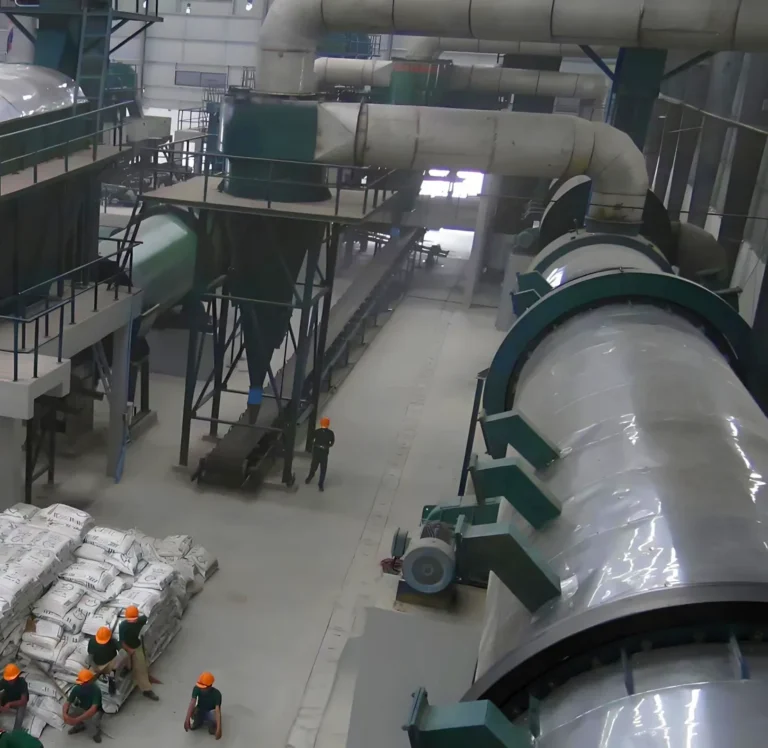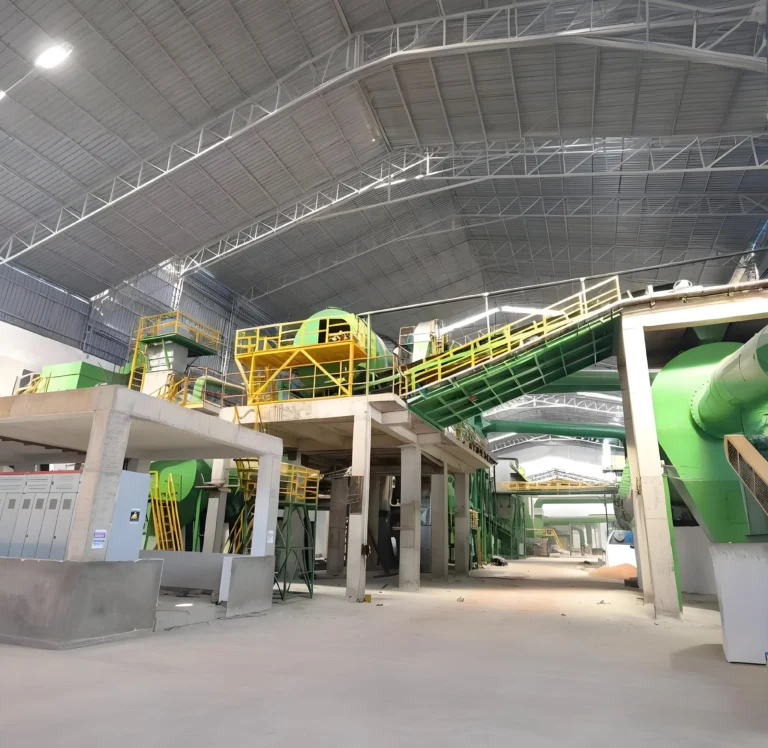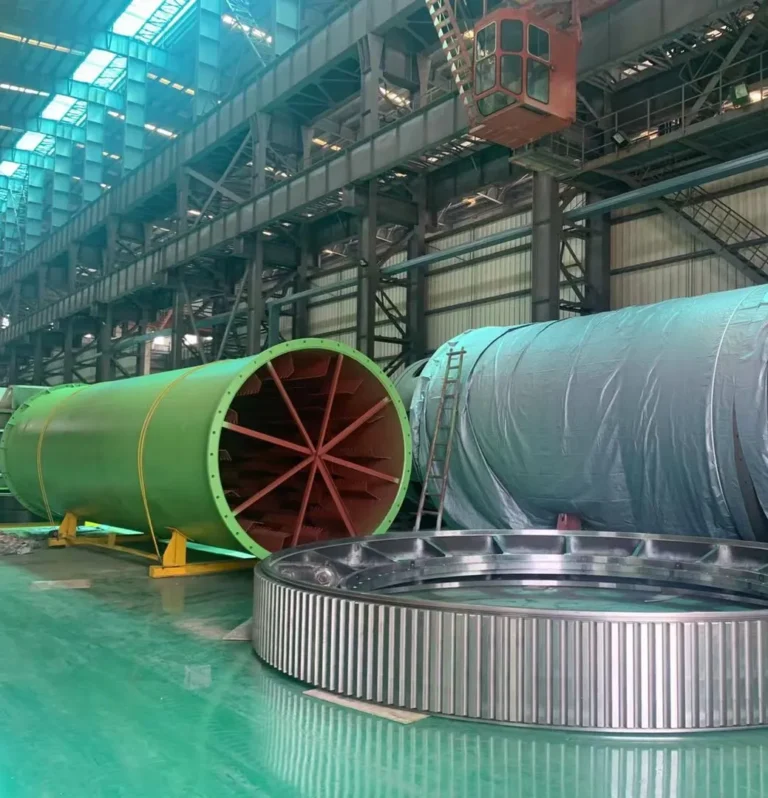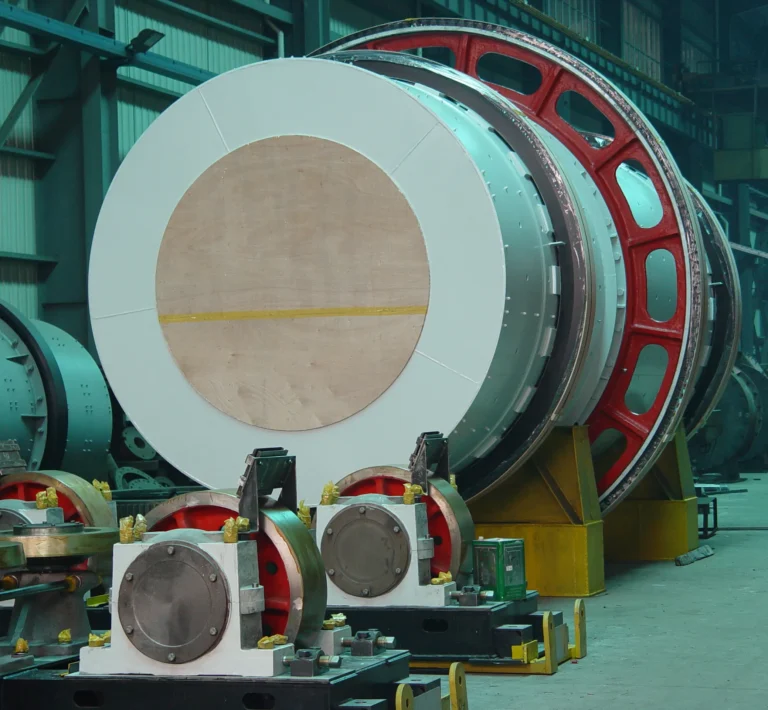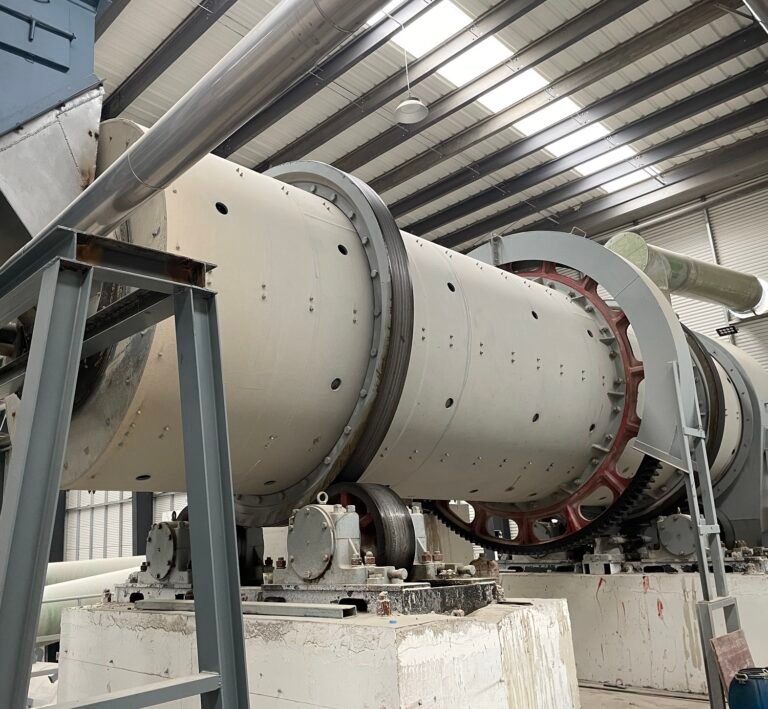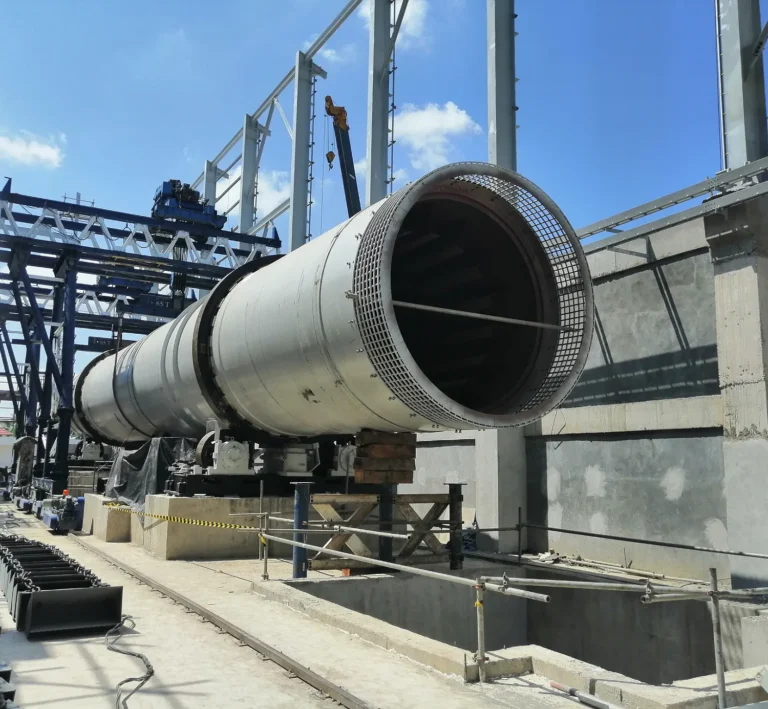Why does cow dung need to be fermented before use?
- Avoid plant damage: When unfermented cow manure ferments in the soil, it releases a large amount of ammonia gas, which is toxic to plant roots and may cause root rot. In addition, if the pests and diseases contained therein are not treated and are applied directly, these diseases will be spread into the soil, causing crop yield reduction or even death.
- Improve soil quality: Fermented cow manure can significantly increase the organic matter content of the soil, optimize the soil structure, and enhance the soil's ability to retain water and fertilizer. These properties provide plants with a more suitable growing environment while significantly improving soil fertility.
- Improve nutrient utilization efficiency: The fermentation process improves nutrient utilization by breaking down the complex organic matter in cow manure into simple compounds that are easily absorbed by plants. This makes fermented cow dung a more efficient and environmentally friendly source of fertilizer, better promoting healthy plant growth.
What is the cow dung fermentation process?

- Fermentation equipment and strain selection: The success or failure of cow dung fermentation is closely related to the fermentation strain used. The fermentation strain is usually composed of a variety of saprophytic microorganisms, whose main function is to quickly increase the temperature of the raw materials at the beginning of fermentation, shorten the fermentation maturation time, and effectively remove odor. In addition, fermentation strains can quickly remove or kill harmful substances such as roundworm eggs, weed seeds in the fermented materials, thereby improving the safety and quality of compost. The compost turner is an important equipment for cow dung fermentation. It not only has a crushing function, but also eliminates the need to build a fermentation tank. By piling cow dung on the ground to form a long strip shape, and then regularly stirring and crushing it through a compost turner, the decomposition of organic matter is promoted under aerobic conditions. This method can significantly reduce civil engineering and labor costs.
- Composting and harmless treatment of cow dung compost: The carbon-nitrogen ratio (C/N) of cow dung is usually between 18 and 22.5:1, which meets the requirements of composting fermentation. However, the water content of cow dung varies greatly, especially in large farms, where the water content can be as high as 62% to 81%. In order to achieve the best fermentation effect, the water content needs to be reduced to 47% to 58%. This process can be achieved through special equipment and processes. For example, the hydraulic trench composter adopts a unique trench design and ground trough structure. This design can customize multiple fermentation tanks according to the spatial structure of the plant. The equipment has the advantages of easy operation, short fermentation cycle, full fermentation, less pollution, and convenient expansion. It can effectively utilize limited land area and meet the needs of large-scale organic waste treatment.
What is the process flow of cow dung manure organic fertilizer production line/plant?
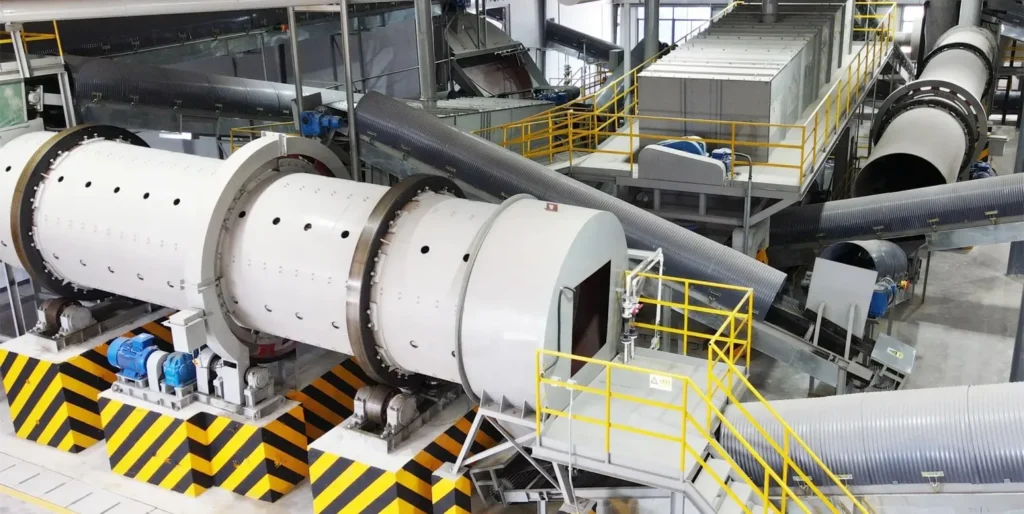
The process flow of organic fertilizer production line usually includes raw material preparation, fermentation, crushing, screening, mixing, granulation, drying, cooling, packaging and other steps. Each link involves different equipment and processes.
Acquisition and preparation of raw organic matter
The raw materials of organic fertilizer generally come from agricultural waste, animal manure, urban garbage, plant residues, etc. These raw materials need to undergo preliminary processing, such as crushing, screening, and removal of impurities, so as to enter the next step of fermentation. The main processes in the raw material preparation stage include: Crushing: The raw materials usually need to be crushed to reduce the particle size and increase the surface area, which is conducive to subsequent fermentation and microbial activity. Ingredients: According to the composition requirements of the target organic fertilizer, various raw materials are reasonably proportioned and the carbon-nitrogen ratio (C/N ratio) is adjusted to ensure the smooth progress of the fermentation process.
Fermentation of organic matter
Fermentation is the core link of organic fertilizer production. Its purpose is to degrade the organic matter in the raw materials through the action of microorganisms and convert them into usable fertilizers. At this stage, composting is the most common fermentation method. The main steps include: Composting: The pretreated raw materials are piled into piles, usually in a triangular or trapezoidal shape with a height of about 1.5 meters and a width of 4-6 meters. Turning the pile: The pile is regularly turned by the turning equipment to maintain the supply of oxygen in the compost, promote the activity of microorganisms, and accelerate the decomposition of organic matter. Turning the pile is usually carried out every 2-3 days to ensure that the temperature of the pile is uniform and avoid too high or too low temperature.
Temperature control: Temperature control during the fermentation process is crucial, and the progress of fermentation is usually monitored by the temperature change of the pile. The ideal composting temperature is 50-60℃, which helps to improve the sterilization effect of organic fertilizers. Humidity control: The humidity of the pile is usually kept between 55%-65%. Too high or too low will affect the activity of microorganisms.
Crushing, screening and mixing
After fermentation, fertilizers usually contain some large pieces of incompletely decomposed materials, which need to be processed by crushing and screening equipment: Crushing: Cage crushers, bulk crushers and chain crushers are used to break up large pieces of raw materials to ensure uniform and fine organic fertilizer particles for subsequent granulation. Screening: Rotary drum screens and vibrating screen screening equipment are used to separate particles or impurities that do not meet specifications to ensure the quality of the final product. Mixing: In the mixing stage, various raw materials and additives are evenly mixed. Common additives include minerals, trace elements, organic acids, etc. Through the mixer, raw materials, humus and additives are fully mixed to achieve fertilizer uniformity and optimal nutritional content.
Organic waste to cow dung poultry fertilizer granulation

Granulation is the process of converting mixed organic fertilizer raw materials into granules. Granulation makes the use of fertilizers more convenient, and the granulated fertilizers have better storage properties. At this stage, common granulation methods include wet granulation and dry granulation. Wet granulation is the process of forming wet raw materials into granules through a steam drum rotary granulator. This method can better maintain the strength and uniformity of the granules and is suitable for wet raw materials. In contrast, dry granulation uses a dry roller press compactor granulator to press powdered raw materials into granules, which requires high compression force and proper temperature control to ensure the density and stability of the granules.
Organic-inorganic fertilizer drying and cooling
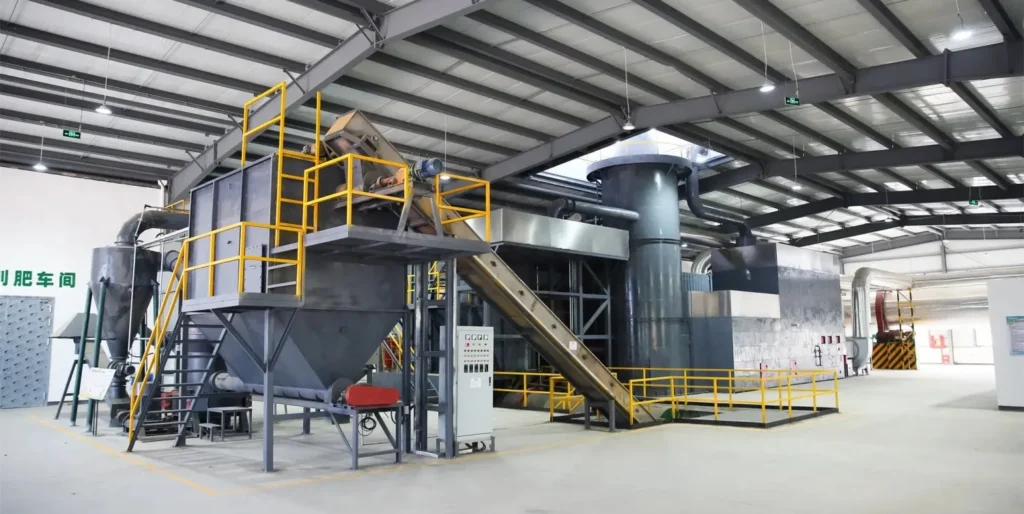
Organic fertilizer granules after granulation usually contain high moisture and need to go through a drying and cooling process to improve the storage stability of the fertilizer. The drying stage usually uses a rotary fertilizer drum dryer or a fluidized bed dryer to evaporate the moisture in the granules to achieve an appropriate moisture content (usually 10-12%). During the drying process, the temperature needs to be strictly controlled to avoid excessively high temperatures that cause the loss of active ingredients in the organic fertilizer. Cooling is a step after drying, because the temperature of the dried particles is high, which may cause agglomeration during packaging. Therefore, it is usually necessary to reduce the temperature of the particles through cooling equipment (such as cooling drums or coolers) to ensure that the fertilizer maintains good fluidity and quality during packaging.
Coating technology applied to organic cow dung fertilizer
The coating process of cow dung organic fertilizer refers to the process of coating cow dung organic fertilizer particles with a special protective film through coating technology during the production of organic fertilizer, thereby improving the characteristics and use effect of the fertilizer. Coating can not only enhance the particle strength and wear resistance of the fertilizer, but also prolong the release time of the fertilizer, reduce nutrient loss, and improve the absorption efficiency of crops. First, after the organic fertilizer particles are formed, a coating machine or a coater is used to evenly coat the specific coating material on the surface of the fertilizer particles. The coating material can be natural or synthetic, such as polymers, binders, vegetable oils, paraffin, etc. The coating layer plays a role in protecting the fertilizer components and controlling the nutrient release rate.
Secondly, through the coating process, a thin film will be formed on the surface of the fertilizer. This film can control the release rate of nutrients in the fertilizer in the soil, avoid nutrient waste caused by too fast release, and prevent the influence of external environmental factors such as humidity and temperature, thereby improving the stability of the fertilizer. The application of coating technology can make cow dung organic fertilizer more competitive in the market. Through the coating process, the application effect of cow dung organic fertilizer can be more accurately controlled during the growth cycle of crops, avoiding excessive or insufficient nutrient release, while reducing the environmental pollution that traditional fertilizers may cause. In addition, the coated organic fertilizer is more stable during storage and transportation, and is not easily affected by moisture or loss, which improves the overall quality and use value of the product.
Organic cow dung fertilizer screening and grading/classification
The cooled organic fertilizer particles need to be screened and graded to ensure uniform particles and remove unqualified particles. In the screening stage, vibrating screens or rotary drum screens/sieve are usually used to grade the particles by size and select particles that meet the standards. After grading, organic fertilizers with different particle sizes can be graded and packaged according to market demand. This not only ensures the consistency of the product, but also improves the accuracy of the packaging to meet the needs of different customers.
Organic fertilizer fully automatic Packaging and semi-automatic packaging
Finally, the organic fertilizer particles that have been screened and graded will enter the packaging stage. At this stage, the packaging equipment puts the organic fertilizer into bags and seals them, and adds necessary labels for easy transportation and sales. Common packaging methods include bagging, barreling and bulk packaging. The choice of packaging method usually depends on the production scale and market demand.
Why is steam drum granulation method more suitable for producing organic fertilizer than roller extrusion granulation and high tower granulation?
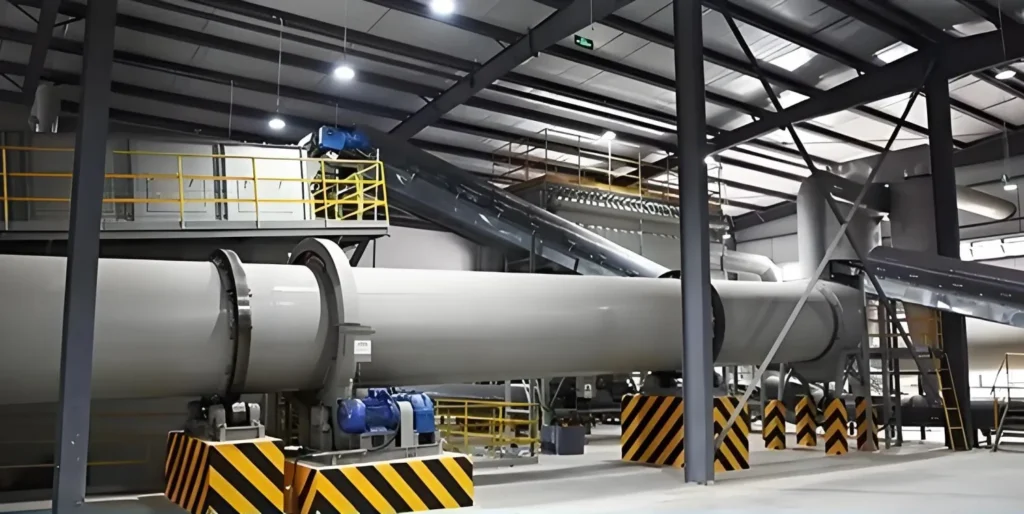
- Strong adaptability, suitable for handling wet materials: Drum granulation equipment can handle raw materials with high moisture content, which is crucial for the production of organic fertilizers. Because organic fertilizer raw materials usually contain high moisture, drum granulation can promote the formation of particles by adjusting the degree of wetness without causing material adhesion or over-compaction. However, pressure granulation and high-tower granulation usually require drier raw materials, and there will be problems of particle adhesion or difficulty in forming when handling wet materials.
- Uniform particles and high strength: NPK steam drum granulation uses the method of continuous rolling and friction on the inner wall of the drum to gradually gather and form the raw materials in the drum. In this process, the particles gradually form dense particles through friction and collision, and have good strength and uniformity. In contrast, pressure granulation may have large particle differences during the forming process because it mainly relies on external pressure for pressing, and it is not easy to ensure the uniformity of the particles. High-tower granulation has high requirements on the humidity and particle size of the raw materials due to its particle formation principle (through gravity and spray), which is easy to cause uneven particles, especially when the humidity and material composition change greatly.
- Simple process and convenient operation: The drum granulation process is relatively simple, the equipment runs stably and is easy to maintain. Drum granulators usually do not require too much fine control and high-pressure equipment, and are suitable for large-scale organic fertilizer production. However, pressurized granulation requires higher equipment pressure and precise operation control, with large equipment investment and relatively high maintenance costs. The structure of the high-tower granulation equipment is also complex, and it requires multiple processes such as spraying and drying to complete granule forming and drying. The production cycle is long and the environmental requirements are high.
- Better biodegradability: Due to the rotational friction of the raw materials during the drum granulation process, the surface of the granules is usually smoother and denser, which is conducive to the biodegradability of organic fertilizers. In pressurized granulation and high-tower granulation, the structure of the granules is relatively hard, the biodegradability is poor, and it is not conducive to the rapid decomposition of organic fertilizers and crop absorption.
- Low cost and high efficiency: The production cost of the drum granulation equipment is low and the operating efficiency is high. The equipment investment is small and can adapt to the changes of various raw materials. It is especially suitable for processing a variety of different types of organic fertilizer mixtures. However, the investment and operation costs of pressurized granulation and high tower granulation equipment are relatively high, and they are suitable for more special production needs. They are not as universal as drum granulation in organic fertilizer production.
What are the 3 commonly used raw materials for making organic fertilizer?
| Raw Material | Description |
| Chicken Manure | Chicken manure is nutrient-rich, typically containing 1.5-2.0% nitrogen, 1.2-1.5% phosphorus, and 0.8-1.0% potassium. It has a moisture content of 60-70%, which makes it ideal for fertilizer production. With the right processing equipment, you can recycle chicken waste into high-quality organic fertilizers. |
| Cow Dung | Cow dung is a valuable raw material, with a moisture content of 60-80%. It is rich in nutrients such as nitrogen (0.5-0.7%), phosphorus (0.2-0.3%), and potassium (0.3-0.4%). Cow dung helps improve soil structure and nutrient content when processed into organic fertilizer. It’s particularly beneficial for soil conditioning and promoting plant growth. |
| Straws | Straws have a relatively low moisture content of around 15-20%, which makes them ideal for organic fertilizer production when combined with other materials like animal manure. Straws provide carbon to balance the nitrogen content of manure, optimizing the fertilizer’s efficiency. Adding animal manure helps boost the nutrient density for enhanced fertilizing properties. |
Why Invest in Cow Dung Organic Fertilizer Plant 2025?

- The use of organic fertilizers is a popular trend in modern agriculture. In recent years, NPK compound fertilizers have been used on a large scale in China. The fertilizer effect is very significant but it will cause certain damage to the soil in the long term. Organic fertilizers can provide many benefits to plants or soil, and if you can make your own organic fertilizers, you may gain greater economic and ecological benefits.
- In addition, raw materials for the production of organic fertilizers are easy to obtain, such as pastures and chicken farms. Cow manure, chicken manure and other organic wastes are good materials for making organic fertilizers. These wastes can be purchased at a very cheap price and then processed on production lines. to increase economic value.
- Organic fertilizers are rich in organic acids, polypeptides, nitrogen, phosphorus, potassium and other essential elements for plants. They can provide necessary nutrients for plants and have an important impact on agriculture. In order to improve the effect of fertilizer, high-quality organic fertilizer can be made through an organic waste fertilizer production line.
- Using organic fertilizers can help improve soil conditions and increase soil fertility and buffering capacity. After application, the organic matter in the fertilizer can enhance the fertility of the soil and make the soil more suitable for plant growth. In addition, organic fertilizers promote plant growth and increase yields. Because it is rich in organic matter and various elements, it can provide nutrients to plants and microorganisms in the soil.
- The activity of microorganisms in turn is beneficial to soil health, thereby further promoting plant growth. Organic fertilizers can also improve the utilization rate of chemical fertilizers. Compared with chemical fertilizers, the use of organic fertilizers can reduce the amount of fertilizers because it not only provides rich nutrients but also improves the microbial environment of the soil. The combined use of organic fertilizers and chemical fertilizers can complement each other and effectively improve the comprehensive utilization effect of fertilizers.
Adventages of cow dung fertilizer granules making machine
| Feature | Description |
| Recycle Organic Waste | The organic cow manure fertilizer production line helps recycle organic waste and turn it into valuable fertilizer, providing an opportunity for profit generation, especially in Africa like Tanzania Dodoma county. |
| Easy Control | The TONGLI fertilizer making machines in the production line are designed for ease of control, ensuring smooth operation for users. |
| Automation | Most of the machines in the organic fertilizer production line are automated DCS PLC control, reducing manual labor and increasing efficiency. |
| Complete Working Flow | The production line offers a full set of machines and processes, ensuring smooth fertilizer production from start to finish. |
| Systematic Integration | All components of the production line are systematically connected, allowing for efficient and streamlined fertilizer production. |
| Simple Obtained Raw Materials | The production line requires only basic natural materials for processing, making it cost-effective and easy to source the raw materials. |
How much does it cost to set up a high quality organic cow dung granular fertilizer production line in Africa Tanzania?

Building an organic fertilizer production plant in Tanzania, especially a large-scale fertilizer manufacturing plant, involves many factors, such as land costs, employee wages, equipment investment and other operating costs. According to the actual situation in Tanzania, the following is the budget estimate for production lines of different sizes (taking annual production of 50,000 tons, 100,000 tons, 150,000 tons, 200,000 tons, and 300,000 tons as examples), and a specific analysis of the relevant cost data is attached.
- Land costs: In Tanzania, land costs vary depending on the location, distance from the city or major industrial areas, and whether the land is agricultural land. According to the actual situation in Tanzania, land costs can be roughly divided into the following categories: Peri-urban or near industrial areas: about US$2,000-5,000 per hectare (in more developed urban areas, such as near Dar es Salaam, land prices are higher). Rural areas far from cities: about US$500-1,500 per hectare. Since the land required for the factory is large, it is recommended to choose an area far away from the city to reduce the cost of land purchase.
- Employee wages: Tanzania's wage level is relatively low, but it is also affected by regional differences, job nature and technical requirements. The approximate wage levels are as follows: Ordinary workers (operators, cleaners, etc.): about US$150-300 per month; Technical workers (such as equipment maintenance personnel, electrical workers, etc.): about US$300-500 per month, Management personnel (such as production managers, financial managers, etc.): about US$600-1000 per month, Administrative and sales personnel: about US$300-600 per month, Senior engineers and R&D personnel: about US$1000-2000 per month. During the production process, you may need to employ 50-200 employees (depending on the size of the factory), which will affect the annual labor costs.
- Equipment investment and production line construction costs: The investment in organic fertilizer production equipment mainly includes fermentation equipment, crushers, mixers, granulators, dryers, coolers and packaging systems. Depending on the scale of production, the investment cost of equipment will vary. Equipment investment and production line construction costs: The investment in organic fertilizer production equipment mainly includes fermentation equipment, crushers, mixers, granulators, dryers, coolers and packaging systems. Depending on the scale of production, the investment cost of equipment will vary. 80,000 tons per year production scale: about 100,000-2,500,000 US dollar. 100,000 tons per year production scale: about 1,500,000-2,500,000 US dollars. 150,000 tons per year production scale: about 2,500,000-3,500,000 US dollars. 200,000 tons per year production scale: about 3,500,000-4,000,000 US dollarr. 300,000 tons per year production scale: about 4,000,000-5,000,000 US dollars.
- Water, electricity and gas costs: The organic fertilizer production process requires a lot of water, electricity and gas. Due to the differences in power supply and water resources in Tanzania, the following is a rough monthly cost budget: Water cost: about $500-1500 per month, depending on the size of the factory and the amount of water used in the production process. Electricity cost: about $1000-5000 per month, depending on the degree of automation of the production line and the energy consumption of the equipment. Gas cost: if natural gas or liquefied gas is used to heat equipment such as dryers, it is about $500-2000 per month. In order to reduce energy consumption, it is recommended to invest in some energy-saving equipment or consider using renewable energy (such as solar energy and wind energy) to reduce long-term energy costs.
- Transportation and Raw Material Procurement Costs: If you are able to utilize local resources such as farm waste and animal manure as raw materials, the cost will be greatly reduced. Otherwise, you need to consider the transportation costs of procuring raw materials. Raw material procurement costs: For example, chicken manure, cow manure, pig manure, etc. are usually around $50-150 per ton (depending on the source and transportation distance). If your factory is far from the main supply source, transportation costs will increase further.
- Other operating expenses: Taxes and licenses: According to Tanzanian regulations, business operations are subject to various taxes and fees, which vary according to income and region. Environmental protection costs: including the costs of environmental protection measures such as wastewater treatment and exhaust emissions, which are determined according to the environmental regulations of the local government.
What is the principles and microbiological processes of Cow dung manure microbial organic fertilizer production?
- Aerobic fermentation is a process in which microorganisms decompose organic matter into simple inorganic matter through catabolism and anabolism under aerobic conditions, obtain energy from it, and convert part of the organic matter into cell material of microorganisms to promote their growth and reproduction. In this process, the organic matter in the waste is converted into more stable humus to form organic fertilizer. Through aerobic fermentation, the raw materials can not only degrade harmful substances, but also improve the fertilizer efficiency of fertilizers.
- The microbiological process of aerobic fermentation can be divided into three stages, each involving different types and activities of microorganisms. First, in the initial stage of fermentation (usually 1-3 days), the mesophilic microorganisms in the pile begin to proliferate rapidly. They mainly use soluble and easily degradable organic matter, such as monosaccharides, to metabolize and release heat. At this time, the temperature of the pile gradually increases, usually between room temperature and 45°C. The microorganisms at this stage are mainly mesophilic and aerobic, mainly non-spore-forming bacteria, fungi and actinomycetes. Actinomycetes and fungi are particularly important in decomposing cellulose and hemicellulose.
- Then enter the high temperature stage. When the pile temperature rises above 45℃, the pile enters the high temperature stage. The pile temperature rises rapidly, usually reaching 55℃ within 2-3 days, and reaches the highest temperature within a week, up to 80℃. At this time, thermophilic microorganisms gradually replace mesophilic microorganisms and begin to strongly decompose complex organic matter such as hemicellulose, cellulose and protein. At 50℃, thermophilic fungi and actinomycetes are active; when the temperature rises to 60℃, the activity of fungi almost stops, and only thermophilic actinomycetes and bacteria are still active. The main function of the high temperature stage is to promote the formation of humus and effectively kill pathogenic microorganisms in organic waste, which meets the high temperature fermentation sanitation standards of my country (GB7959-87), requiring the maximum fermentation temperature to reach 50-55℃ and last for 5-7 days.
- At the end of the high temperature stage, the temperature of the pile begins to gradually decrease. At this time, there is still a small amount of difficult-to-decompose organic matter and newly formed humus, while the activity of microorganisms gradually weakens, and the fermentation enters the mature stage. When the pile temperature drops to around 35-40℃, the fertilizer gradually matures, and the humus content continues to increase and tends to stabilize.
Fermentation Procedure and Process Flow
- The fermentation procedure includes three main steps: raw material pretreatment, fermentation and post-treatment. First, in the raw material pretreatment stage, sorting, crushing, adjustment of moisture content and carbon-nitrogen ratio and other treatments are required to ensure that the raw materials are suitable for fermentation. Then comes the raw material fermentation stage. The fermentation cycle is generally 15-20 days and is divided into two stages. The first stage includes two stages, medium temperature and high temperature, which usually last for 10-12 days. The temperature rises from the initial stage to 50-55℃, microorganisms begin to actively decompose organic matter, and the pile temperature continues to rise. The second stage is when the pile temperature gradually drops to 35-40℃, and the remaining organic matter continues to be decomposed until the fertilizer is completely decomposed. This process usually takes 5-10 days.
- After the fermentation is completed, the post-treatment stage is entered, which is mainly to remove impurities and perform necessary crushing treatment to ensure the uniformity and quality of the fertilizer.
- In terms of process flow, the first is the composting technology. Before composting, the ground needs to be compacted, and then the raw materials such as feces, peat, etc. are mixed in proportion and piled into piles. Secondly, the stirring and turning composting fermentation process is adopted to pile the materials in a pile shape. The cross section of the pile is usually triangular or trapezoidal, with a height of 1.5-2.0m and a width of 4-6m. The moisture content of the pile is generally 55-65%.
- The whole process of fermentation includes the pretreatment, mixing, fermentation, re-modulation, granulation, packaging and delivery of raw materials. In the pretreatment stage, the raw materials are sometimes required to be crushed to adjust the particle size. The suitable particle size range is usually 12-60mm. Crushing and screening can increase the surface area of the raw materials, which is conducive to the reproduction of microorganisms and accelerates the fermentation process. After stacking, the pile is usually turned every 4-7 days. After 1 month, the turning of the pile can be stopped and natural ventilation can be used for post-ripening.
Factors affecting cow dung fermentation and their control
- During the fermentation process, there are several key factors that need to be controlled to ensure the optimization of the fermentation effect. Turning the pile is one of them. Turning the pile can not only provide oxygen and promote the growth of microorganisms, but also regulate the temperature and humidity of the pile. Too few times of turning the pile may lead to insufficient oxygen in the pile, affecting the rise of fermentation temperature; too many times of turning the pile may cause heat loss and affect the harmlessness of fermentation. Usually, turning the pile 2-3 times during fermentation is the most appropriate.
- Another influencing factor is the content of organic matter. Too low organic matter content will lead to insufficient heat in the pile, unable to promote the proliferation of thermophilic bacteria, and then affect the pile to reach the high temperature stage, thereby reducing the hygienic effect of fermentation. Excessive organic matter content may make it difficult to supply oxygen when turning the pile. Therefore, the appropriate organic matter content of 20-80% is ideal.
- Carbon-nitrogen ratio (C/N ratio) is also a key factor. During the fermentation process, microorganisms need organic carbon as energy, and nitrogen is also involved in protoplasm synthesis. The most suitable C/N ratio is 25:1. When the C/N ratio is too high, the fermentation speed slows down; when the C/N ratio is too low, the decomposition rate of organic matter will be affected. The common C/N ratio range is: sawdust 300-1000, straw 70-100, raw material 50-80, cow dung 8-26, pig dung 7-15, chicken dung 5-10.
- Moisture content is also an important factor affecting the fermentation speed. The moisture content of the pile is generally 55-65%. Too high or too low moisture will affect the metabolic activity of microorganisms. Usually, the moisture content can be tested by holding the material in your hand. When the moisture content is appropriate, the material can form a mass but will not drip.
- Particle size will also affect the fermentation effect. Appropriate particle size is conducive to oxygen permeability and microbial growth. Generally speaking, a particle size of 12-60mm is more suitable.
- Finally, pH value is also a key factor in microbial reproduction. The appropriate pH range is 6-8.5, and usually there is no need to adjust the pH value during the fermentation process.
How to judge whether cow dung and chicken dung are fully fermented?
- Whether the fermentation is mature can be judged by changes in appearance, temperature and chemical indicators. Mature fertilizer should be brown or black, loose in structure, and no longer have a bad smell. The temperature usually drops below 40°C when it is mature. In terms of chemical indicators, the content of organic matter and volatile solids should gradually decrease and tend to be stable. Changes in nitrogen content and C/N(carbon vs Nitrogen) ratio can also reflect the progress of fermentation. Usually, the C/N ratio drops from 25-35:1 to below 20:1 during fermentation, indicating that the fertilizer has reached a stable state.
- In addition, the ratio of water-soluble organic carbon to water-soluble organic nitrogen is also an important indicator for determining the degree of maturity. Usually, when the ratio is 5-6, it means that the fermentation is complete and the fertilizer can be put into use.
Frequently asked question about cow dung fertilizer plant FAQ
The viscosity of the materials in the formula directly affects the feasibility of the granulation process. When superphosphate is used as the phosphorus source, the ratio of superphosphate conditioner to adhesive should be greater than 40% when producing low-concentration fertilizers. When ammonium phosphate is used as the phosphorus source to produce high-concentration compound fertilizers, the ratio of conditioner to adhesive should not be less than 38%. In addition, the amount of urea also affects the proportion of adhesive in the formula. In the formula of high-viscosity urea, the proportion of adhesive is usually controlled at around 33%. The raw materials selected in the formula should help improve the roundness of the particles. Some materials (such as potassium chloride, ammonium chloride, potassium sulfate, ammonium sulfate, etc.) have a high decomposition and softening temperature. These materials can increase the strength of the particles during the drying process and further improve the roundness of the particles. In order to achieve this effect, at least 35% of dispersible materials should be ensured in the formula to ensure particle strength.
In the processing of organic fertilizer, the control of drying temperature is crucial, especially when the raw materials contain active microorganisms or organic components. In order to avoid the death of effective live bacteria due to excessive temperature during the drying process, the drying temperature of the material should be controlled below 60°C as much as possible, usually kept at around 50°C. This is because higher temperatures will damage the effective flora in organic fertilizers, thereby affecting the quality and effect of fertilizers.
Therefore, the hot air temperature during the drying process needs to be appropriately adjusted according to the moisture content of the material. Normally, the hot air temperature should not exceed 130°C. By controlling the hot air temperature in sections, the thermal efficiency can be effectively improved, and the temperature can be ensured to have no negative impact on the effective ingredients in the material. In actual operation, the drying temperature can be flexibly adjusted according to different raw material characteristics and production needs to ensure stable product quality and efficient production.
The diameter, side height, inclination, rotation speed and water addition of the disc will affect the granulation. First of all, the diameter and side height of the disc are important factors affecting the granulation effect. The ratio of the disc side height to the diameter should usually be controlled between 0.12 and 0.17, and the diameter of the disc can be calculated and determined based on experimental data or production intensity in actual production.
Secondly, the inclination of the disc is also one of the key parameters that determine the granulation effect. The size of the inclination is directly related to the movement of the material on the disc. The choice of inclination should be determined based on the natural repose angle of the wet powder before granulation. For example, the natural repose angle of potassium chloride is about 35°, that of dipotassium phosphate is 30°, and that of heavy calcium is between 31° and 35°. When the inclination angle of the disc is less than the natural repose angle of the wet powder, the material is easy to adhere to the disc, affecting the granulation effect. As the inclination angle increases, the rotation speed should also increase accordingly, which can shorten the residence time of the material on the disc, reduce the overflow particle size, and thus improve the quality of the particles. Generally speaking, the appropriate inclination angle range is 45° to 55°.
In addition, the rotation speed of the disc has an important influence on the granulation rate of the fertilizer. Increasing the rotation speed of the disc can speed up the tumbling of the material and increase the collision opportunities of the particles, thereby improving the granulation rate and improving the uniformity of the particles. The control of the amount of water added has a significant effect on the granulation effect. As the amount of water added increases, the granulation rate of the fertilizer will first increase, but after reaching a certain amount, continuing to increase the water content will lead to a decrease in the granulation rate. This is because too much water will make the material too wet, affecting the formation and strength of the particles. At the same time, the particle size of the raw material will also affect the granulation rate. Generally, the smaller the particle size, the higher the granulation rate. Therefore, when adjusting the amount of water added, the factor of the particle size of the raw material must also be considered.
The labor requirements of a cow dung organic fertilizer production line with an annual output of 200,000 tons vary according to different production links and the degree of automation. Usually, a production line that produces 48 tons of fertilizer per hour requires about 10 to 15 workers to operate and monitor. These workers are mainly responsible for different jobs:
Turn the compost and handle the raw materials: Usually one worker is required to turn the compost and handle organic raw materials such as cow dung. This process is crucial to the fermentation process of the raw materials, ensuring that the raw materials are evenly heated and effectively decomposed during the fermentation process.
Granulation and drying: During the production process, especially in the granulation stage, two workers are usually required. One worker is responsible for monitoring the granulation equipment to ensure that the pellets are formed and the size is consistent, and the other is responsible for adjusting the drying equipment to keep the pellets within the appropriate range of moisture to avoid over-wetting or over-drying. During the drying process, a hot air furnace is usually required to provide the required hot air. If coal is used as the heat source, 2 to 3 dedicated workers are required to manage and put the coal to ensure a continuous supply of heat.
Packaging and finished product management: In the packaging stage, 2 to 3 workers are usually required. One worker is responsible for bagging the organic fertilizer, and the other is responsible for sewing and sealing the packaged fertilizer bags. In order to ensure the smooth operation of the production line, it is recommended to arrange 2 to 3 standby workers to deal with any equipment failures or operational problems.
Central control room: The operators in the central control room need to monitor the operation status of the production line in real time and adjust the fertilizer formula such as 15-15-15, 18-18-18, etc. through the computer DCS control system. Generally, 2 to 3 operators are on duty in turn.
Other maintenance personnel, quality inspectors, forklift operators, etc. A 200,000-ton cow dung organic fertilizer production line requires about 15 to 20 people to ensure normal operation.
Installing the entire cow dung organic fertilizer production line is a complex project involving multiple links and a large amount of equipment. Tongli will send an installation engineer to the site for guidance. However, the following conditions are required:
1. Lifting equipment: Since the equipment of the organic fertilizer production line is usually large and heavy, a crane is an indispensable tool. The crane will help you lift the equipment from the transportation location to the predetermined installation location. The lifting of the equipment needs to follow strict safety standards to ensure stability and safety during the lifting process. Before lifting, you need to confirm the size and weight of the equipment and reserve enough space for operation.
Welding and cutting tools: Some equipment may need to be cut or welded according to the layout and production needs of the site, especially when connecting pipes, installing brackets and adjusting equipment. Make sure to prepare basic welding and cutting tools, such as electric welders, cutters, etc., to handle the adjustment or disassembly work required by the equipment during transportation. In addition, concrete supports, steel bars, bolts and other materials may also be required for the installation of equipment infrastructure.
2. On-site water and electricity conditions: Before installing the equipment, it is necessary to ensure that the water and electricity supply of the production line is ready. In particular, equipment such as drum dryers, granulators, mixers, etc. require stable power support, while hot air furnaces, crushers, etc. may require a larger power supply. When arranging cables on site, it is necessary to select the appropriate cable type and voltage level according to the power requirements of the equipment to avoid power shortage or overload. At the same time, in order to ensure the normal operation of the equipment, sufficient water sources need to be provided, especially for equipment that requires moisture control, such as granulators and dryers. The installation of water pipes needs to take into account the overall layout of the production line to avoid insufficient water sources or poor water flow affecting production efficiency.
3. Pipes and installation materials: In organic fertilizer production lines, especially in the drying, mixing, and transportation links, a large number of pipeline systems are involved. When installing pipelines, it is necessary to consider the flow path between raw materials and finished products to ensure smooth connection of various production links. The pipeline system needs to use corrosion-resistant and high-temperature resistant materials, especially around hot air furnaces and drying equipment. In addition, the joints of the pipelines should be sealed to prevent air or water leakage. When installing pipelines, the close fit between equipment and pipelines should be considered to ensure smooth flow of materials.
4. Forklift and feeder: In order to efficiently deliver raw materials to the production line, it is recommended to prepare a forklift to help transport materials. Forklifts can easily deliver bulk raw materials into the production system through feeders. The location of the feeder should be reasonably laid out to ensure that it is correctly connected to the interfaces of each device, while avoiding excessive material conveying paths that affect production efficiency.
5. Installation team and professional technical support: During the installation process, it is best to be operated and monitored by an experienced technical team. The technicians are not only responsible for the installation and commissioning of the equipment, but also need to check each link to ensure the quality and safety of the installation process. Especially in the wiring and commissioning of the control system and automation system, the professionalism of the technicians is particularly important.
6. Commissioning and testing: After the installation is completed, all equipment needs to be fully debugged and tested to ensure the normal operation of the equipment. During the commissioning process, check the electrical connection, gas supply and pipeline system of each device. In particular, the test of the control system ensures that each sensor, actuator and automation system can operate stably. During the test, it is also necessary to detect the working effect of each link of the production line to ensure that the material flow, particle forming, drying effect, etc. of the production line meet expectations.
7. Civil foundation Infrastructure construction: Before the equipment is installed, the infrastructure of the production line must be planned in advance, including the equipment foundation, the reinforcement of the ground and walls, the ventilation system, fire-fighting facilities, etc. In particular, the ground should have sufficient load-bearing capacity and durability to avoid failures due to unstable foundations after the equipment is installed. The wall and house structure must also meet safety standards to ensure the stable operation of the machine and the safety of the staff.
8. Safety and environmental protection measures: During the entire installation process, site safety must be ensured. During the installation process, sufficient safety protection facilities, including guardrails, safety signs, emergency equipment, etc., need to be equipped. In addition, since the organic fertilizer production process may involve gas emissions, noise, dust, etc., effective protection and control measures must be taken in accordance with environmental protection standards. For example, install flue gas treatment equipment, dust removal systems, etc. to ensure that the impact on the environment during the production process is minimized.
For a 50,000-ton organic fertilizer production line, the area of the composting area usually requires about 3,000 to 4,000 square meters. This part of the area requirement is mainly used for raw material stacking and composting during the composting process. The area of the granulation, drying, cooling, coating and packaging areas is about 8,000 to 10,000 square meters. The total site requirement is about 11,000 to 14,000 square meters. This scale of production line is usually suitable for small and medium-sized organic fertilizer production enterprises.
For a 150,000-ton production line, the area requirement for the composting area will increase, usually requiring 6,000 to 7,500 square meters. As the production scale expands, the area requirement for the granulation, drying, cooling, coating and packaging areas will also increase, usually requiring 18,000 to 22,000 square meters. The overall site requirement is about 24,000 to 29,500 square meters. This scale of production line is suitable for medium-sized production enterprises and can meet the needs of a larger market.
For a 200,000-ton production line, the area requirement for the composting area is further expanded, generally 8,000 to 10,000 square meters. As the production capacity increases, the area requirement for the granulation, drying, cooling, coating and packaging areas also increases accordingly, requiring 24,000 to 28,000 square meters. The total site requirement usually reaches 32,000 to 38,000 square meters. This type of production line is suitable for large enterprises and can produce higher yields of organic fertilizer products.
For a 300,000-ton production line, the area requirement for the composting area is larger, generally 12,000 to 15,000 square meters. Granulation, drying, cooling, coating and packaging areas require 35,000 to 40,000 square meters. The overall site requirement is between 47,000 and 55,000 square meters. Such a production line is usually suitable for large organic fertilizer production enterprises with efficient production capacity and more complex process flows.
When designing the actual production line, in addition to the composting and granulation related areas, it is also necessary to consider the area of other auxiliary facilities, such as storage area, equipment maintenance area, office area, etc. Depending on the specific production process and equipment layout, the site requirements may be different, so you can give your requirements to the engineers of Tongli Heavy Machinery, and they will arrange your plant according to your site conditions.
Conclusion:
Cow dung organic fertilizer has become a widely used natural fertilizer in agricultural production due to its rich organic matter, nitrogen, phosphorus, potassium and other nutrients. It can not only improve soil fertility and soil structure, but also promote crop growth and increase yield. At the same time, it has a strong ecological and environmental protection effect and reduces the discharge of agricultural waste. The use of cow dung organic fertilizer helps increase the organic matter content in the soil, improves the water holding capacity, air permeability and biological activity of the soil, and thus achieves sustainable agricultural development.
In terms of production technology, the production process of cow dung organic fertilizer usually includes key links such as raw material pretreatment, composting fermentation, mixing, granulation, drying, cooling, screening and packaging. First, the harmful substances in cow dung are degraded through composting fermentation and converted into nutrients that can be absorbed by plants. Then, the fertilizer is made into granules through mixing, granulation and other processes to improve its convenience and storage. In this process, commonly used granulation methods include wet granulation and dry granulation, which are adapted to different raw material characteristics and production needs. Finally, drying and cooling treatments ensure that the moisture and temperature of the fertilizer are suitable for long-term storage and transportation.
In general, cow dung organic fertilizer has become an important part of organic agriculture and environmentally friendly agriculture due to its excellent soil improvement effect and environmental friendliness.

